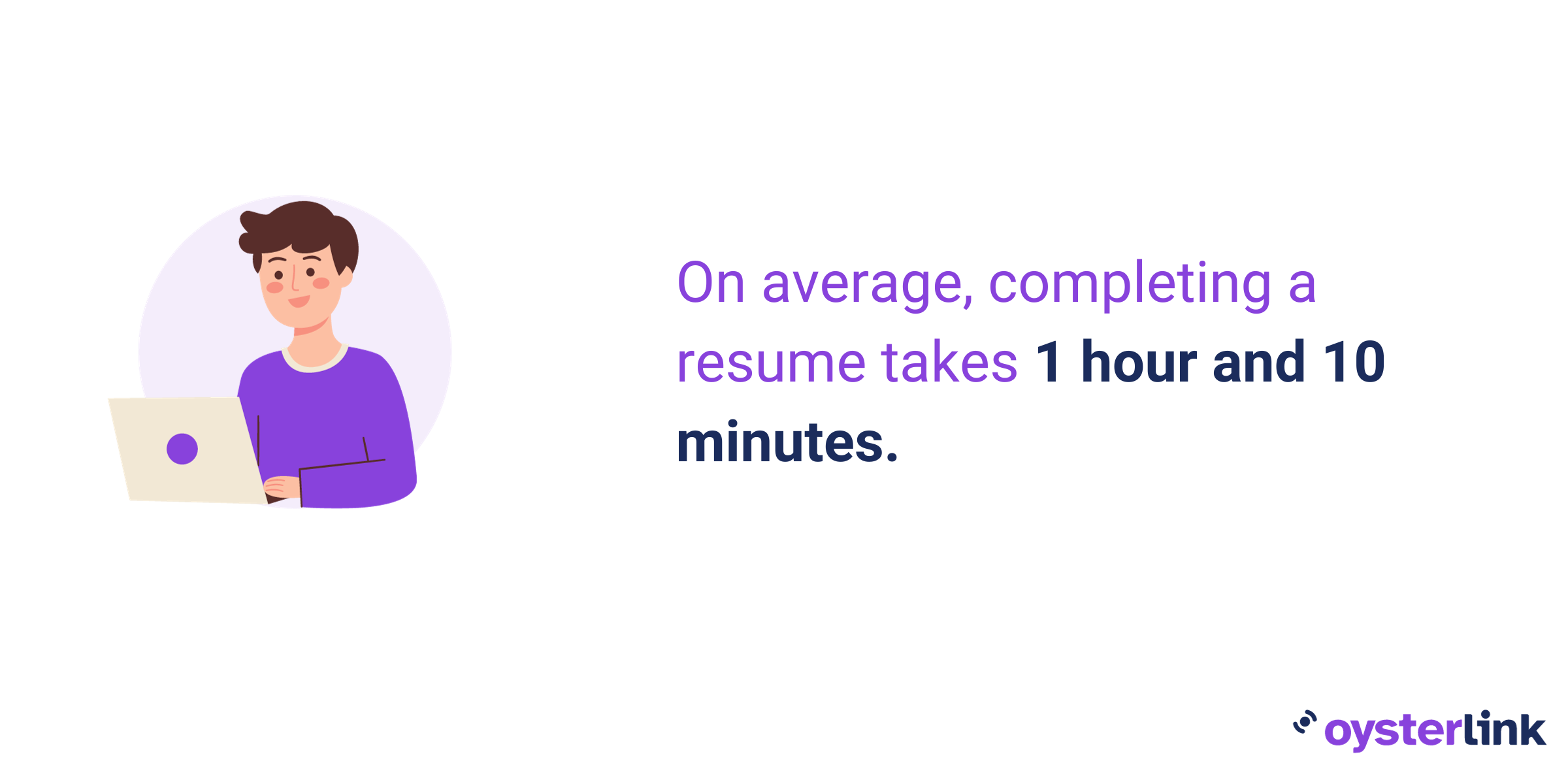CV vs Resume Key Takeaways:
- CVs are mainly used in academic jobs while resumes are preferred for business and industry roles.
- Most hiring managers want one-page resumes for staff jobs and two pages for executive roles.
- A majority of employers prefer CVs to be only two pages long.
Knowing whether to submit a CV vs resume can make or break your job application. While they may seem similar, each serves a different purpose and shapes how Hiring Managers view you.
This guide explains the key differences between a CV vs resume, what to include in each and how to decide which one best fits your job search.
CV vs Resume: Key Differences
While people often use these terms interchangeably, they differ in content, purpose and structure. Here’s how:
- Approach to job applications: A CV serves as a comprehensive document that can be used for multiple applications, while a resume requires customization to align with the job description.
- Emphasis: A CV offers a thorough overview of your academic and professional journey, showcasing degrees, research contributions and scholarly accomplishments. A resume, by contrast, focuses on highlighting the most relevant qualifications tailored to the specific job.
- Length: CVs are typically longer and provide a detailed account of one's entire career. Resumes, especially for those early in their careers, tend to be concise, often limited to a page to capture an employer’s attention quickly.
- Purpose: CVs are primarily used for academic positions, fellowships and grants, while resumes are commonly used in business, non-profit and public sector roles.
- Design Layout: CVs tend to have a plain and simple format, whereas resumes offer more flexibility, especially in creative fields.
What Is a CV?
The term CV stands for “Curriculum Vitae”, a Latin phrase that means “course of life”.
It is a detailed list of your academic career and employment history. A CV is often required for academic positions and roles that emphasize professional qualifications.

In the United States, CVs are primarily used in academic and research positions. When a hiring officer asks for a CV, they are seeking an in-depth document that outlines your academic achievements, including publications, research and presentations.
Below is an example of a CV:
What Does a CV Include?
A CV can be categorized into three sections: the core section, the optional section and supplementary documents.
- Core section: This includes personal details, educational background and professional associations.
- Optional section: This section may feature relevant skills, acquired languages or organizational memberships that enhance your candidacy. While this information is not mandatory, include it only if it aligns with the position you are applying for.
- Supplementary documents: Additional attachments that reinforce your qualifications, such as a statement of research, dissertation abstract, recommendation letters, cover letters or transcripts.
For example, a statement of research is a one-page document providing an overview of your research achievements, while a dissertation abstract is a one- to two-page summary highlighting key points of your work.
How Long Should a CV Be?
Most employers prefer it to be limited to two pages. However, for individuals with extensive experience, it is common for a CV to extend further, providing a detailed account of their professional and academic accomplishments.
A recent survey on 41 employers found that a staggering 27 of them (65%) preferred the CV of potential employees to be just two pages.
[Source: Keele University Research]
What Is a Resume?
A resume is a brief overview of an individual's relevant education, experiences, skills and qualifications tailored for potential employers. "Résumé" is a French word meaning “summary”.
Resumes are typically tailored to specific job application documents and adhere to particular resume formats.

Its primary purpose is to quickly communicate to employers why you are a strong fit for a job through a concise, easy-to-read format.
Below is an example of a resume.
John Doe
Executive Chef
linkedin.com/in/[example] | [email protected] | +123-456-7890Summary
Passionate and experienced Executive Chef with over 15 years in culinary leadership roles. Skilled in creating innovative menus, improving kitchen operations and leading diverse teams. Adept at maintaining high standards of food quality, safety and profitability. Known for increasing customer satisfaction and streamlining operational efficiencies.
Work Experience
Executive Chef
Gourmet Bistro, New York, NY
March 2020 – November 2023
- Designed and executed seasonal menus, leading to a 25% increase in overall restaurant revenue.
- Ensured strict adherence to health and safety regulations, maintaining a consistent 5-star customer rating.
- Collaborated with the management team to develop cost-effective purchasing strategies, reducing food waste by 10%.
- Trained and mentored kitchen staff, fostering a collaborative and high-performance team environment.
Head Chef
Culinary Creations, San Francisco, CA
February 2016 – January 2020
- Revamped the menu with locally sourced ingredients, driving a 20% increase in customer satisfaction scores.
- Implemented cost-control measures, reducing food costs by 15% while maintaining menu quality.
- Led a kitchen team of 15 members, promoting professional growth and skill development.
Sous Chef
Black Rabbit, Chicago, IL
April 2014 – December 2015
- Assisted in menu development, focusing on innovative, seasonal dishes that enhanced guest experiences.
- Optimized kitchen workflows, improving efficiency by 10% through process improvements and staff training.
- Monitored food inventory and collaborated with suppliers to ensure the freshest ingredients at competitive prices.
Education
Bachelor of Science in Hospitality Management
De Loureigh University — 2020
- Graduated Cum Laude
Relevant Skills
- Menu Development & Culinary Creativity
- Kitchen Operations & Team Leadership
- Budgeting & Cost Control
- Food Safety & Sanitation Compliance
- Staff Training and Development
Specialized Training
- Certified Executive Chef Program (CEC), Culinary Institute of America — 2020
- Leadership & Management in Hospitality, AHLEI — 2016
- Food Safety & Sanitation Certification, National Restaurant Association (NRA) — 2014
Notable Achievements
- Spearheaded a sustainability initiative at Gourmet Bistro, cutting food waste by 15% and receiving recognition in local media.
- Organized a series of pop-up dining events in San Francisco, generating $50K in additional revenue within six months.
- Contributed to a successful restaurant rebranding campaign, boosting foot traffic by 30% within the first year.
What Does a Resume Include?
A typical resume format includes the following components:
- Contact Information: Ensure your contact details are accurate and up-to-date for employers to reach you easily.
- Professional Experience: A concise statement summarizing the candidate's key qualifications and career objectives.
- Education: Details about the candidate's educational background, including degrees earned, institutions attended and graduation dates.
- Work Experience: A comprehensive section highlighting the candidate's relevant work history, typically organized in reverse chronological order.
- Skills: An enumeration of the candidate's skills, including technical, soft and industry-specific competencies.

On average, individuals spend around 1 hour and 10 minutes completing a resume. This process involves tailoring each section to highlight relevant qualifications and experiences.

How Long Should a Resume Be?
Length preferences vary depending on the job position's level or seniority. A survey revealed that 52% of hiring managers for staff-level roles prefer one-page resumes, while 44% prefer two pages and only 3% favor three pages.
For executive-level positions, 7% liked one-page resumes, 61% preferred two pages and 31% favored three pages.
Preferred Initial Section of the Document
A CV typically begins with details about an individual’s education, while a resume leads with work experience.

Regional Differences in CV and Resume Usage
The choice between a CV and a resume often depends on the industry, region, and job-specific requirements. Here’s a breakdown:
- By industry: For roles in the non-profit, private, or public sectors, a resume is typically requested. In contrast, academic and medical positions often require a CV.
- By region: In the U.S. and Canada, resumes are standard. However, in European countries, New Zealand and parts of Australia, CVs are more common for job applications.
- Job-specific requirements: Certain specialized roles may require elements found in both a CV and a resume. When in doubt, seek clarification from the recruiter.
CV vs Resume: Which One To Submit?
Knowing the difference between a CV and a resume is crucial when job hunting. This understanding will help you make a stronger impression on potential employers and increase your chances of landing the job you want.










Loading comments...